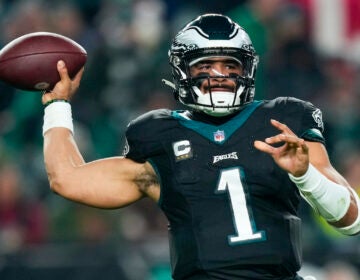August 2013
We Heart 13th Street
Art of Food — Produced by Monica Rogozinski
This summer, entrepreneurs Chef Marcie Turney and Valerie Safran, will add to their culinary portfolio in Center City’s bustling Midtown Village when they open Little Nonna’s a causal Italian eatery. The cozy 37-seat restaurant will be evocative of an Italian grandmother’s living room, circa 1950 featuring vintage lace in the windows, hanging antique copper pots and playful accents, including faux flowers.
Chef Turney and Safran have been working since 2002 to help reinvent 13th Street. The pioneering duo’s six restaurants and boutiques between Chestnut and Sansom Streets have helped transform the once-desolate neighborhood into trendy Midtown Village. Safran is the buyer for all products carried in both boutiques and also serves as general manager for the restaurants. As a team, she and Chef Turney are hands-on entrepreneurs who take genuine ownership of every aspect of their businesses, from the look and feel of the spaces to the products and menus that they offer to the service standards of the staff.
In October of 2002, the pair opened their first business on South 13th Street, a house wares boutique called Open House, and set the ball rolling for what eventually became a full-scale revitalization of the block between Chestnut and Sansom Streets. The pair’s wildly popular restaurants include: Jamonera, a cozy Spanish tapas and wine bar, Barbuzzo, a Mediterranean kitchen and bar that has twice earned Chef Turney James Beard semi-finalist nominations for “Best New Restaurant” and “Best Chef, Mid-Atlantic” and Lolita, a Mexican BYOB, frequently counted among Philadelphia magazine’s “Top 50 Restaurants.” They also own a gourmet prepared food market, Grocery and two lifestyle boutiques, Open House and Verde.
On this month’s Art of Food we’ll hear how this power-duo succeeded to transform a once-desolate area into the most sought after blocks in town.
Martha Graham Cracker
Art of Life — Produced by Karen Smyles
Some people know him only as Dito van Reigersberg, but many others are lucky enough to also know him as Martha Graham Cracker, his sassy, funny, alter ego personality. Martha dances, acts, sings, and is extremely funny.
The road to entertainment begin for the Swarthmore graduate when he and a small group of friends decided to get together and form a performance group. Founded in 1995 as an interdisciplinary ensemble, Pig Iron Theatre Company is dedicated to the creation of new and exuberant performance works that defy easy categorization. The company has received glowing reviews locally and beyond and numerous awards.
About 8 years ago, Reigersberg started performing the Martha Graham Cracker character at the occasional fundraiser or outside event, and was such a hit that she is packing in the audiences to this day. In May 2013 Martha performed at the Philadelphia Museum of Art as part of their Art After 5 performance series and Friday Arts stopped by to see what all of the hoopla was about, and we weren’t disappointed. The stairs of the PMA were filled with Martha fans from all walks of life. It was a good time for all. We also had the opportunity to sit down with Reigersberg at Pig Iron’s Northern Liberties studio to find out more about him and the woman who has become known as the “Queen of Philadelphia Drag Cabaret”.
Cornelius Varley and his Fantastical Patent Graphic Telescope Machine
Art — Produced by Michael O’Reilly
When Lewis Carroll sent Alice down the rabbit hole, he imagined a drink that would make her smaller than a mouse and a cake that would extend her body to the size of “the largest telescope that ever was.” Through the Looking Lens at the American Philosophical Society Museum (through December 29 2013) highlights stunning, never before seen watercolors by British artist/inventor Cornelius Varley (1781-1873) that range from vast panoramas rendered small to microscopic algae writ large. But unlike the enchantments of Carroll’s imagination, Varley’s wondrous images were of real things. He captured them before the advent of photography, using drawing instruments he invented, along with optical lenses he crafted and employed with great skill.Varley is known as an artist, but this exhibition is the first ever to showcase him as the inventor and maker of drawing instruments integral to his artistic and scientific practices. Through the Looking Lens reveals the full breadth of Varley’s work at the intersection of art and science. Similar to many early APS members in the 18th and 19th centuries—polymaths such as Benjamin Franklin, Benjamin Smith Barton, David Rittenhouse, and Alexander Bache—Varley effortlessly traversed the boundaries of multiple disciplines, propelled by his enormous inquisitiveness.
WHYY is your source for fact-based, in-depth journalism and information. As a nonprofit organization, we rely on financial support from readers like you. Please give today.




